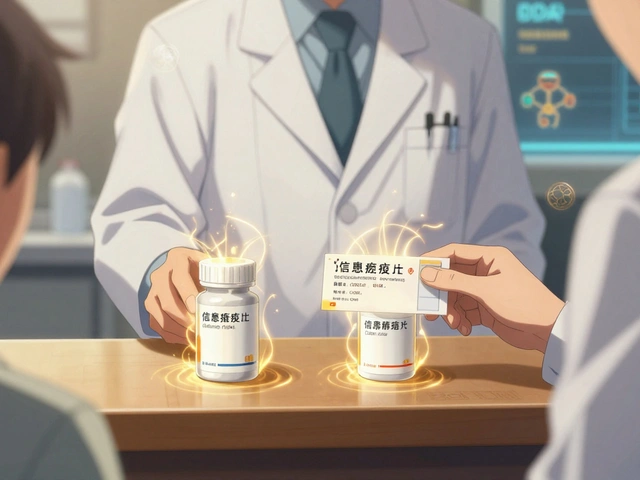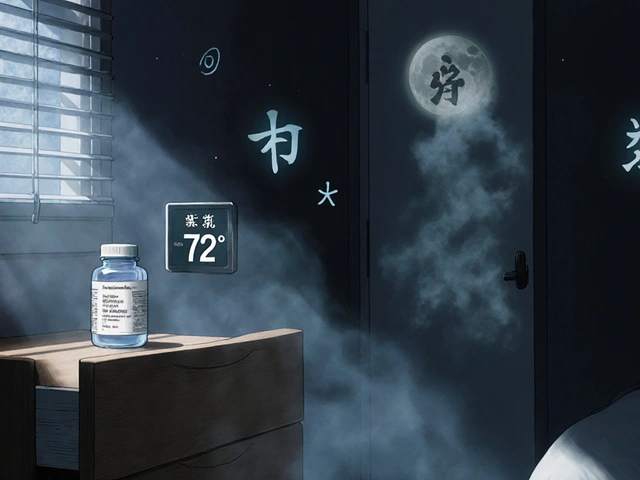Many people think they’re allergic to sulfa drugs because they had a rash years ago after taking an antibiotic. But here’s the truth: most of them aren’t allergic at all-or at least, not to the things they’re being told to avoid. The confusion around sulfa allergies is widespread, and it’s putting patients at risk-not from the drugs they’re avoiding, but from the ones they’re forced to take instead.
What Exactly Is a Sulfa Allergy?
When someone says they have a "sulfa allergy," they’re usually talking about a reaction to an antibiotic like sulfamethoxazole (found in Bactrim or Septra). That’s the only kind of sulfa allergy that matters clinically. But the term "sulfa" gets thrown around like it applies to anything with sulfur in it. That’s where things go wrong. The problem isn’t sulfur. It’s a specific chemical group called the arylamine at the N4 position of the molecule. Only sulfonamide antibiotics have this group. When your body breaks them down, it creates a reactive compound that can trigger an immune response. That’s what causes real allergic reactions-rashes, fever, or worse, like Stevens-Johnson Syndrome. But drugs like hydrochlorothiazide (a blood pressure pill), furosemide (a water pill), celecoxib (Celebrex for arthritis), and even acetazolamide (for glaucoma) don’t have that same structure. They contain sulfur atoms, yes-but not the kind that triggers allergies. They’re chemically different. And that difference is everything.Real Cross-Reactivity: It’s Not What You Think
If you’re allergic to sulfamethoxazole, you might react to other antimicrobial sulfonamides like sulfadiazine or dapsone. That’s cross-reactivity within the same class. But you won’t react to furosemide. You won’t react to celecoxib. You won’t react to hydrochlorothiazide. A 2003 study of over 17,500 people with confirmed sulfonamide antibiotic allergies found no increased risk of reaction to non-antibiotic sulfonamides. The reaction rate? 9.5% in the control group. 9.9% in those with the allergy. That’s not a difference. That’s noise. Even more telling: a 2019 review of 1,200 patients with true sulfa antibiotic allergies showed only 0.8% had any reaction to non-antibiotic sulfonamides. The general population? 0.7%. So if you’ve been told to avoid hydrochlorothiazide because of a "sulfa allergy," you’ve likely been unnecessarily denied a safe, effective, and often essential medication.What Medications Are Actually Safe?
Here’s a clear breakdown:- AVOID if you have a true sulfonamide antibiotic allergy: sulfamethoxazole-trimethoprim (Bactrim, Septra), sulfadiazine, sulfacetamide, dapsone.
- SAFE for nearly everyone with a sulfa allergy: hydrochlorothiazide, furosemide, chlorthalidone, celecoxib, acetazolamide, sulfonylureas like glyburide.
- USE WITH CAUTION: sulfasalazine (Azulfidine). This one’s tricky. It breaks down into sulfapyridine, which is an antimicrobial sulfonamide. About 10% of people with sulfa antibiotic allergies react to it.

Why This Misunderstanding Is Dangerous
Let’s say you’re hospitalized with a urinary tract infection. Your chart says "allergic to sulfa." The doctor avoids Bactrim-which is the best first-line treatment for many UTIs-and picks a broader-spectrum antibiotic like ciprofloxacin instead. That might seem safe. But here’s the catch: ciprofloxacin increases your risk of C. difficile infection by more than double. That’s a serious, sometimes deadly gut infection. And it’s entirely preventable if your allergy label was accurate. The same thing happens with heart failure patients denied furosemide, or diabetics denied sulfonylureas, or arthritis patients denied celecoxib. They end up on less effective, more expensive, or more dangerous alternatives. A 2022 Patient Safety Network report found that 12.3% of antibiotic selection errors in hospitals trace back to vague "sulfa allergy" labels. That’s not just a mistake-it’s a systemic failure.What Should You Do If You Think You’re Allergic?
If you’ve been told you have a sulfa allergy, ask yourself: What happened? Was it a mild rash? A fever? Or something severe like blistering skin, swelling, or trouble breathing?- Mild reaction (rash only, no systemic symptoms)? You can likely tolerate non-antibiotic sulfonamides. A single-dose challenge under medical supervision can confirm it. Studies show 98.7% of people pass this test.
- Severe reaction (Stevens-Johnson, toxic epidermal necrolysis, DRESS)? Avoid all antimicrobial sulfonamides. But you can still safely use hydrochlorothiazide, celecoxib, and furosemide.







Bryson Carroll
Wow so let me get this straight you're telling me I've been avoiding hydrochlorothiazide for 12 years because I got a rash from Bactrim in college and it was all just a giant waste of time and money and now my kidney function is worse because I took some crappy alternative
Thanks for the confirmation I guess
Lisa Lee
Canada doesn't have this problem because we actually train our doctors and pharmacists to read science not just copy-paste allergy labels from 2007
US healthcare is a joke
Jennifer Shannon
This is one of those beautiful moments where science quietly corrects decades of medical misinformation-and yet, somehow, we still live in a world where people are told they can't take blood pressure meds because they once got a rash after antibiotics...
It’s not just about drugs, you know-it’s about how we treat knowledge itself. We treat labels like sacred texts, even when they’re based on vague memories from 2003, or a doctor who said ‘better safe than sorry’ without checking the literature.
I’ve seen patients cry because they were denied celecoxib for arthritis and told ‘it’s sulfa’-and then they’re stuck on NSAIDs that wreck their stomachs.
And the worst part? No one ever apologizes.
We don’t need more guidelines-we need more humility.
Doctors, pharmacists, patients: stop treating ‘sulfa allergy’ like a binary switch. It’s a spectrum. It’s a story. It’s a label that got out of hand.
And now, finally, the science is catching up.
Thank you for writing this.
And if you’re reading this and you’ve been told you’re allergic to ‘sulfa’-please, go back to your doctor. Bring this article. Ask for a challenge. You deserve better care than a checkbox on a chart.
Suzan Wanjiru
As a pharmacist I’ve been correcting this for years
Most people don’t even know what a sulfonamide is
They think sulfa = sulfur = everything with an S in it
And yeah we’ve had 3 patients in the last 6 months who were denied furosemide because of a Bactrim rash from 2010
One had heart failure
They got put on a loop diuretic combo that cost 5x more and caused electrolyte chaos
We fixed it in 10 minutes with a note and a reference
It’s not hard
It’s just not taught
Kezia Katherine Lewis
From a clinical pharmacology standpoint, the structural distinction between antimicrobial and non-antibiotic sulfonamides is well-documented in the Journal of Allergy and Clinical Immunology (2020) and reinforced by the FDA’s 2023 labeling guidance
Non-antibiotic sulfonamides lack the arylamine moiety necessary for haptenization and subsequent T-cell-mediated hypersensitivity
Therefore, cross-reactivity is pharmacologically implausible
Yet, EHR systems continue to flag them due to legacy data entry practices and lack of structured allergy ontologies
This represents a systemic failure in clinical informatics, not patient ignorance
Henrik Stacke
My goodness. This is one of those rare pieces of medical writing that manages to be both deeply informative and quietly devastating.
Imagine spending a decade avoiding a life-changing medication because a nurse scribbled ‘sulfa allergy’ on a chart after a mild rash-no investigation, no follow-up, no correction.
And then, years later, you’re told, ‘Oh, by the way, you could’ve taken it all along.’
It’s not just a medical error. It’s a moral one.
I’ve seen this happen in the NHS too. Patients denied celecoxib for arthritis, forced onto opioids. Denied hydrochlorothiazide, forced onto expensive alternatives that don’t work as well.
And the worst part? No one gets fired for it.
Thank you for writing this. I’m printing it out. And giving it to every GP I know.
Knowledge isn’t power. Applied knowledge is.
Let’s apply it.
Manjistha Roy
As someone from India where antibiotics are often sold over the counter without prescription, I've seen so many people self-diagnose sulfa allergies after a rash from a random drug they took for a fever
They never see a doctor
They just remember the word sulfa
And then when they come to the US for treatment, their chart says 'allergic to sulfa' and everyone believes it
We need education at every level-not just for doctors but for patients too
It's not just about drugs, it's about how we learn to trust science over fear
Jennifer Skolney
My mom had a rash on Bactrim in 1998 and was told never to take any sulfa again
She’s 72 now and has been denied furosemide twice for swelling because of it
She’s on a pill that costs $400 a month and gives her nausea
I just found this article and showed it to her doctor
She’s getting a challenge next week
Thank you for giving us the words to fight this
❤️
JD Mette
Thanks for putting this together.
It’s the kind of thing that should be taught in med school, but it’s not.
And I’ve seen how these labels stick.
Even when you tell a doctor, ‘I had a rash once,’ they still write ‘sulfa allergy’ in the system.
It’s frustrating.
But I’m glad someone’s finally speaking up about it.
Hope more people see this.